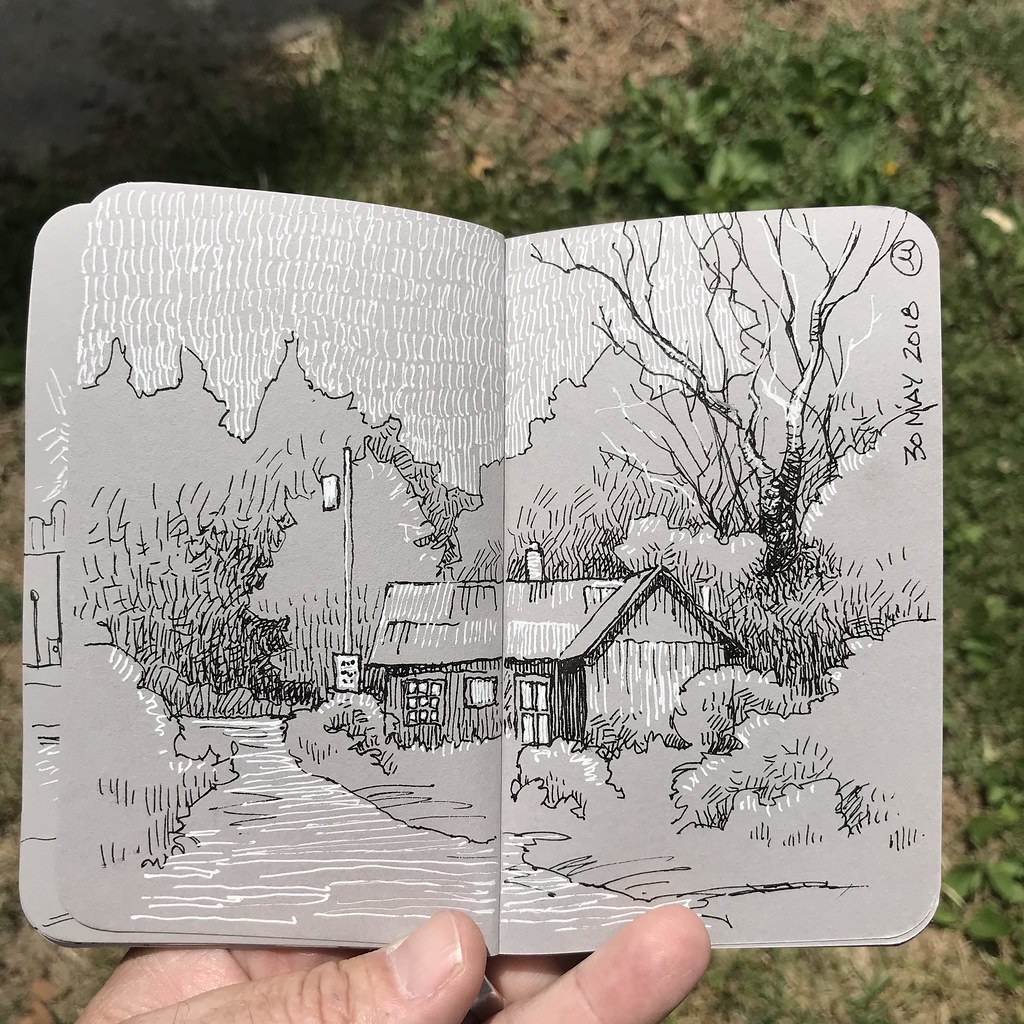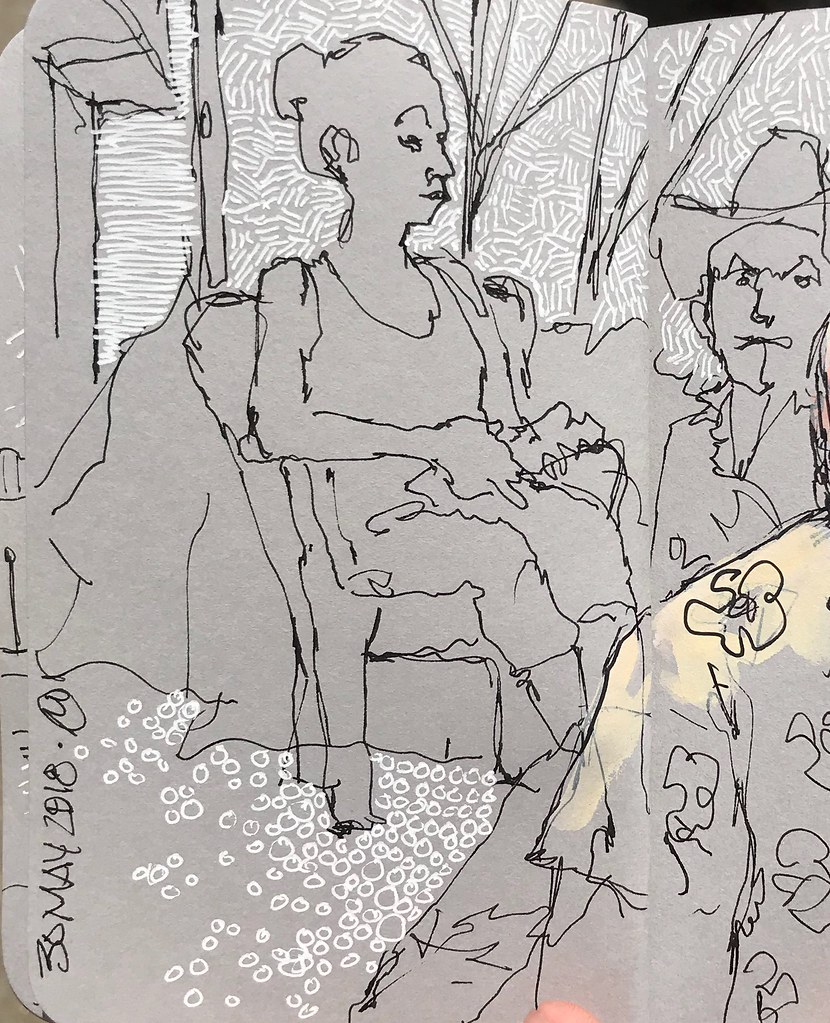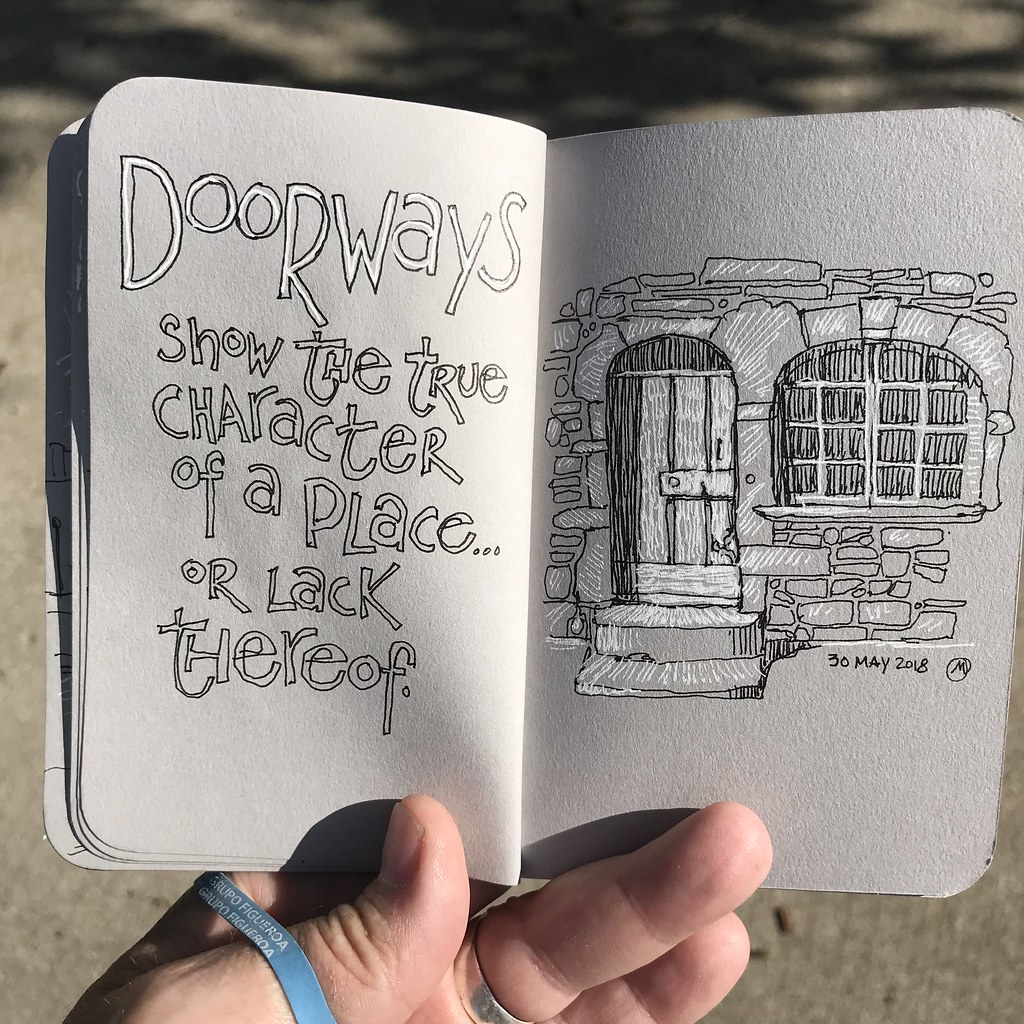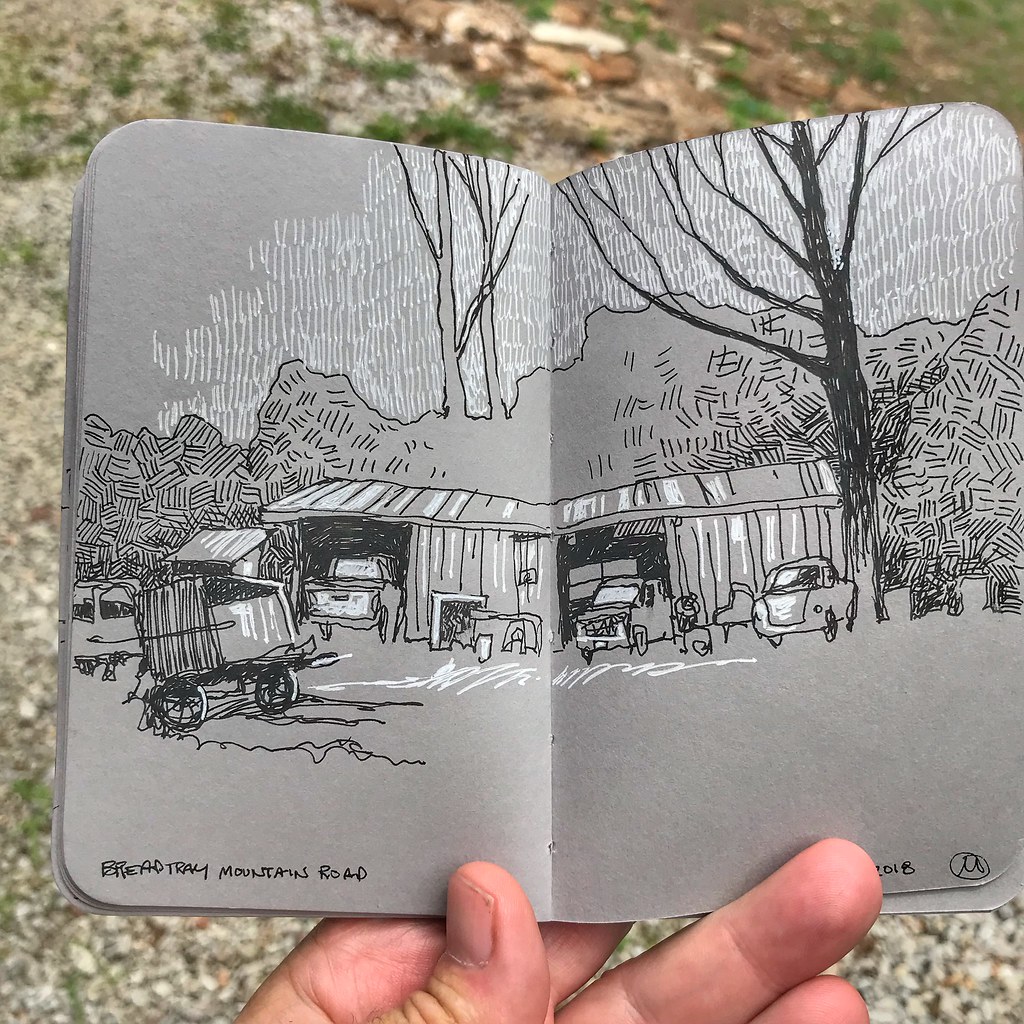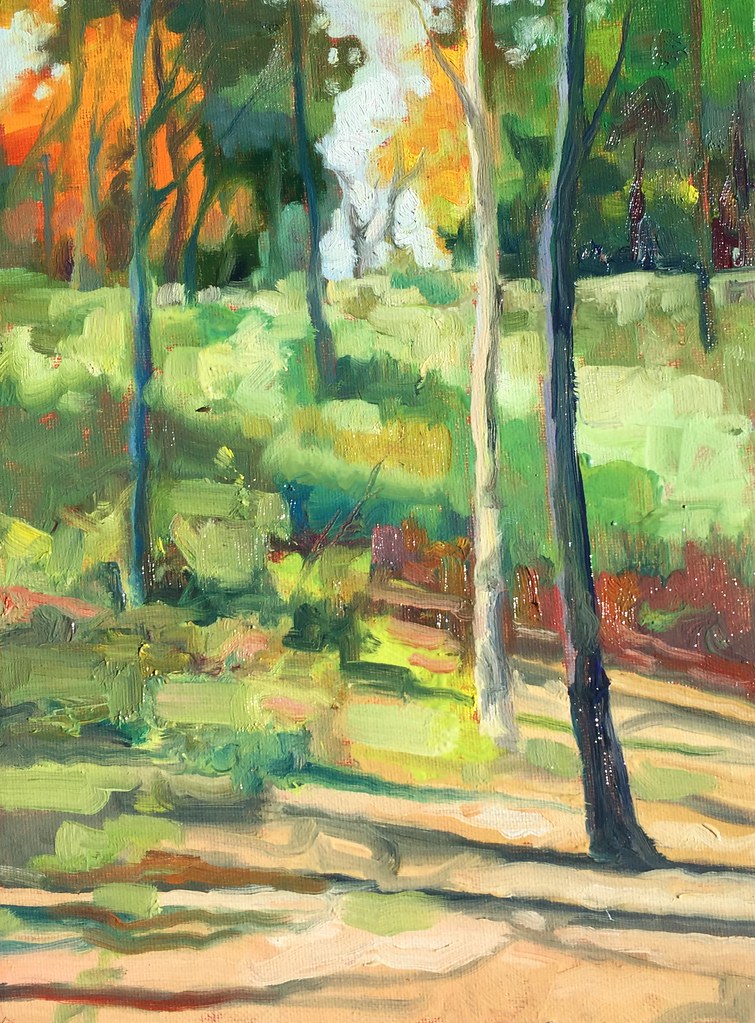
26 June, 2018. I’m home and relaxing in my comfortable leather arm chair. I’ve been absent from these pages for the past few weeks; June is my “travel” month. We’ve come to eschew laptops while we explore, which means no work, no writing – and no updates to this online sketching journal. But I’m back now, and it’s time to get caught up.
Over the next couple of days I’ll be posting sketches from Vermont, New Hampshire, Boston, and Martha’s Vineyard. The first leg of travel extended through large parts of Vermont and some of New Hampshire, where small towns are populated by colonial architecture before suddenly merging into dense wooded areas, rolling hills, and narrow, steep roads. I made the sketch, above, in a wire-bound Fabriano sketchbook. The thin pages take ink nicely but it took me several failed attempts to get used to the almost slick surface of the paper. Eventually, I got the hang of it but I prefer the slight “drag” my pen has on a paper with a little more tooth. The color, incidentally, was added on my iPhone using Adobe Draw. The jury is out for me on this approach – the process feel too sterile to me, even though the “product” looks interesting.

The small Stillman & Birn sketchbook I picked up before embarking is filled with a heavy, gray-toned paper. It’s worked nicely for making three-value drawings: black, white, middle gray.

And while it seemed at first that the limitations would result in a look that sort of resembles a block print, I’m discovering ways to loosen up a little. This is particularly important with the white gel pen, which demands a rather deliberate approach to the application of marks.

As usual, I found myself drawn to the architecture and the architectural detail. This little sketchbook provides a good structure for recording thoughts and sketches. The limited value range brings about a rather graphic look to the illustrations.


In the next post I’ll share sketches of people and the places in Vermont where they live.








